Instant digital products (PDF, ePub, MOBI) ready for you
Download now and discover formats that fit your needs...
Navigating Place-Based Learning: Mapping for a Better World 1st ed. Edition Elizabeth Langran
https://ebookmass.com/product/navigating-place-based-learning-mappingfor-a-better-world-1st-ed-edition-elizabeth-langran/
ebookmass.com
Managing for Public Service Performance: How People and Values Make a Difference Peter Leisink
https://ebookmass.com/product/managing-for-public-service-performancehow-people-and-values-make-a-difference-peter-leisink/
ebookmass.com
The Purpose of Life in Economics: Weighing Human Values Against Pure Science Lall Ramrattan
https://ebookmass.com/product/the-purpose-of-life-in-economicsweighing-human-values-against-pure-science-lall-ramrattan/
ebookmass.com
(eTextbook PDF) for A Writer’s Reference with Exercises 9th Edition
https://ebookmass.com/product/etextbook-pdf-for-a-writers-referencewith-exercises-9th-edition/
ebookmass.com
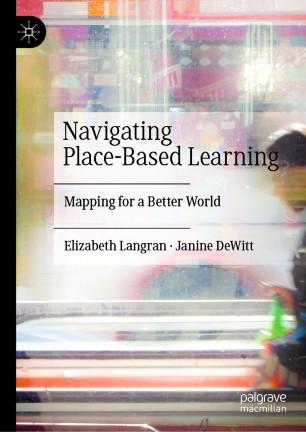
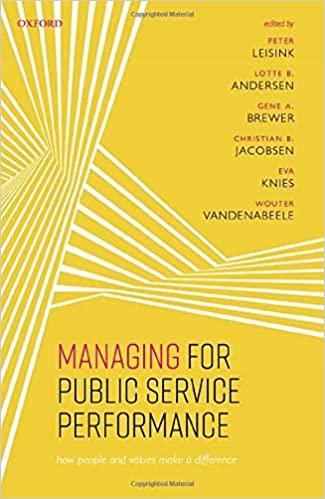


Data Communication and Computer Networks: A Business User's Approach, 9th Edition Jill West
https://ebookmass.com/product/data-communication-and-computernetworks-a-business-users-approach-9th-edition-jill-west/
ebookmass.com
The Oxford Guide to Middle High German Howard Jones
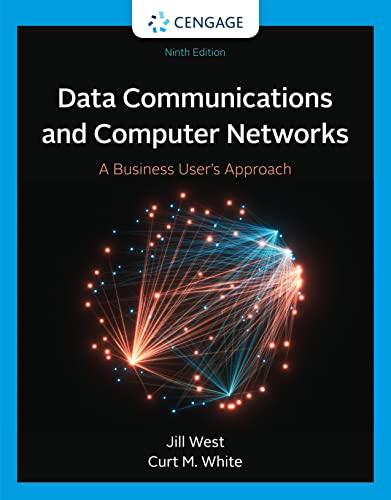
https://ebookmass.com/product/the-oxford-guide-to-middle-high-germanhoward-jones/
ebookmass.com
Auditing: Principles and Practices 1st Edition Ashish Kumar Sana
https://ebookmass.com/product/auditing-principles-and-practices-1stedition-ashish-kumar-sana/
ebookmass.com
Teaching and Learning with Technology (What’s New in Instructional Technology) 5th ed Judy Lever-Duffy And Jean Mcdonald
https://ebookmass.com/product/teaching-and-learning-with-technologywhats-new-in-instructional-technology-5th-ed-judy-lever-duffy-andjean-mcdonald/ ebookmass.com
Enhancing Disaster Preparedness: From Humanitarian Architecture to Community Resilience A. Nuno Martins
https://ebookmass.com/product/enhancing-disaster-preparedness-fromhumanitarian-architecture-to-community-resilience-a-nuno-martins/
ebookmass.com

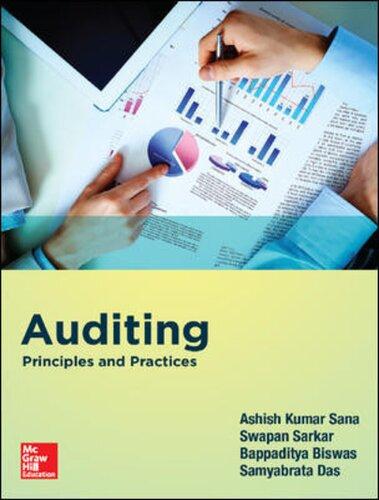
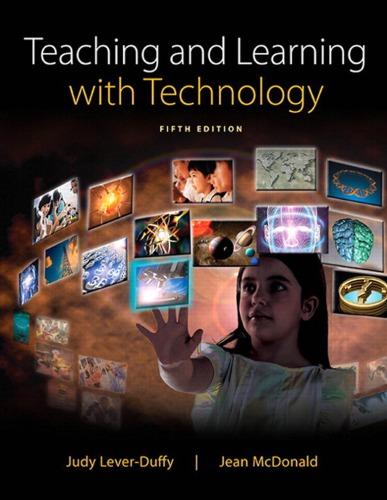
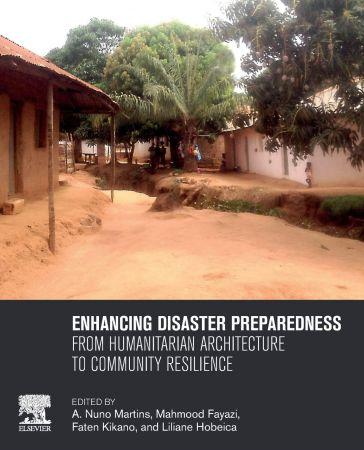
Evidence-Based Validation of Herbal Medicine: Translational Research on Botanicals, 2nd Edition Pulok K. Mukherjee
https://ebookmass.com/product/evidence-based-validation-of-herbalmedicine-translational-research-on-botanicals-2nd-edition-pulok-kmukherjee/
ebookmass.com


Advanced Praise for Make the World a Better Place
The world is facing multiple crises. But what can we do? Make the World a Better Place helps answer that question. Kozma’s deep analyses, coupled with case studies of groups already at work, makes this an essential book for everyone: citizens, designers, and most importantly, decision‐makers in business and government.
Don Norman, Ph.D. Distinguished Professor and founder of the Design Lab, Emeritus University of California, San Diego Author of Design for a Better World
Has design lost its moral compass? Kozma’s Make the World a Better Place comes at important time in human history as unintended consequences of design are causing harm and benefits at scale. This book is a must read for all with an interest in the future of design.
Jim Spohrer, Ph.D. Apple and IBM retired executive Board of Directors, International Society of Service Innovation Professionals
Dr. Kozma shares decades of his experience designing and studying designs for the audacious goal of making our lives and world better. He offers concrete principles and processes to help us design better and to think critically about the designs in our lives. The book is fun to read with informative case studies that demonstrate the myriad ways design impacts us all. The world is in need of better design, and Kozma’s book shows us how to get there.
Mark Guzdial, Ph.D. Director, Program in Computing for the Arts and Sciences, College of Literature, Science, and the Arts Professor of Electrical Engineering and Computer Science, College of Engineering University of Michigan
I have come to see that, at one level, democracy is a design problem—from the writing of a constitution to the structure of a Town Hall meeting to the layout of a ballot. But today’s crisis of democracy runs deep and turns on the function of society itself. To address this larger societal problem, Kozma expands the scope of Design in this comprehensive and compelling book. Here, broad theory and detailed application inform each other, pointing the way toward a society in which individuals and communities can flourish and the ideals of democratic governance may come to fruition.
Robert Cavalier, Ph.D. Director, Program for Deliberative Democracy Emeritus Teaching Professor of Philosophy Carnegie Mellon University
Following on Don Norman’s landmark books (Design of Everyday Things and Emotional Design), Kozma’s Make the World a Better Place crystallizes, in accessible prose, with plenty of detail, where the field of designing “everyday things” needs to be going. Kozma’s book is a GPS for HCI.
Elliot Soloway, Ph.D. Arthur F. Thurnau Professor Computer Science and Engineering, College of Engineering University of Michigan
This book is true to its title in helping the reader understand at the deepest level how each of us can make the world a better place. It neither preaches nor simplifies the task, but rather presents through captivating real‐world examples of design successes and failures across multiple fields the moral imperative of designing well. Reading the manuscript has taught me that we are all in some way designers, and it has enhanced my work as a law professor and foundation executive.
Jay Folberg, J.D. Professor and Dean Emeritus School of Law University of San Francisco Founding Executive Director, The JAMS Foundation
I highly recommend Bob Kozma’s new book Make the World a Better Place: Design with Passion, Purpose, and Values. This book is an important—and timely—addition to that of other pioneers in many fields who have been promoting the importance of students’ learning design thinking/doing in K–16 (and graduate school) education. But more than this, it deals with issues that are often not emphasized—values, ethics, and connecting passion with purpose. This book will be invaluable to learners and designers of all ages and backgrounds in collaborating together to deal with solving complex, sometimes called "wicked," problems and issues requiring transdisciplinary, systems thinking, on a global scale—and critical to our survival and continued growth.
Ted M. Kahn, Ph.D. CEO and Chief Futurist and Learning Architect DesignWorlds for Learning and DesignWorlds for College and Careers
As a society, we have the means to design our way out of wicked problems. Good design can reduce harm, increase happiness, and improve equity and shared prosperity. This knowledge is powerful. It can fill us with optimism. Kozma gets to the very root of design’s relationship to culture and the real human consequences that flow from the design process. The book is a must read for those interested in design for the greater good.
Robert Ferry
Registered Architect LEED AP Co‐founder, Land Art Generator Initiative
With his meticulous research, multifaceted thinking, and marvelous prose, Robert Kozma takes us on a quite memorable journey to make the world a better place.
Curtis J. Bonk, Ph.D. Professor of Instructional Systems Technology Indiana University
Copyright © 2023 by John Wiley & Sons, Inc. All rights reserved.
Published by John Wiley & Sons, Inc., Hoboken, New Jersey. Published simultaneously in Canada.
No part of this publication may be reproduced, stored in a retrieval system, or transmitted in any form or by any means, electronic, mechanical, photocopying, recording, scanning, or otherwise, except as permitted under Section 107 or 108 of the 1976 United States Copyright Act, without either the prior written permission of the Publisher, or authorization through payment of the appropriate per‐copy fee to the Copyright Clearance Center, Inc., 222 Rosewood Drive, Danvers, MA 01923, (978) 750‐8400, fax (978) 750‐4470, or on the web at www.copyright. com. Requests to the Publisher for permission should be addressed to the Permissions Department, John Wiley & Sons, Inc., 111 River Street, Hoboken, NJ 07030, (201) 748‐6011, fax (201) 748‐6008, or online at http://www.wiley .com/go/permission.
Trademarks: Wiley and the Wiley logo are trademarks or registered trademarks of John Wiley & Sons, Inc. and/ or its affiliates in the United States and other countries and may not be used without written permission. All other trademarks are the property of their respective owners. John Wiley & Sons, Inc. is not associated with any product or vendor mentioned in this book.
Limit of Liability/Disclaimer of Warranty: While the publisher and author have used their best efforts in preparing this book, they make no representations or warranties with respect to the accuracy or completeness of the contents of this book and specifically disclaim any implied warranties of merchantability or fitness for a particular purpose. No warranty may be created or extended by sales representatives or written sales materials. The advice and strategies contained herein may not be suitable for your situation. You should consult with a professional where appropriate. Further, readers should be aware that websites listed in this work may have changed or disappeared between when this work was written and when it is read. Neither the publisher nor authors shall be liable for any loss of profit or any other commercial damages, including but not limited to special, incidental, consequential, or other damages.
For general information on our other products and services or for technical support, please contact our Customer Care Department within the United States at (800) 762‐2974, outside the United States at (317) 572‐3993 or fax (317) 572‐4002.
Wiley also publishes its books in a variety of electronic formats. Some content that appears in print may not be available in electronic formats. For more information about Wiley products, visit our web site at www.wiley.com.
Library of Congress Cataloging‐in‐Publication Data applied for:
Paperback ISBN: 9781394173471
Cover Design: Wiley
Cover Image: © RapidEye/Getty Images
Set in 9.5/12.5pt STIXTwoText by Straive, Chennai, India
So, let us leave behind a country better than one we were left with.
Amanda Gorman
National Youth Poet Laureate The Hill We Climb
2021 Presidential Inauguration
To Dad
We call them the Greatest Generation not because they made the most money but because they sacrificed the most for the greatest good.
Design as a Process 27
Purpose 28
Process 29
Outcomes 29
Impact 30
Good Designs versus Good Impacts 31
Everyday Designs and Making the World Better 32
Case Study: Chef Andrés and the World Central Kitchen 33
Designs Big, Small, and Not at All 36
References 38
3 Moral Foundations for Designing a Better World 41
The Philosophers and “The Good” 42
The Good 42
Moral Foundations for Good Design 43
Happiness not harm 43
Knowledge, reasoning, and agency 47
Equality and Justice 49
The social nature of humans 51
Self and Others 53
Self-interest 53
Rational egoism 54
The Philosophes and concern for others 55
References 57
4 Design within a System 59
Systems: Simple, Complex, and Complex Adaptive 60
Simple and complex systems 60
Complex adaptive systems 61
The Dynamics of Complex Adaptive Human Systems 62
Self-interest, reciprocity, and trust 62
Social system as a normative culture of trust and caring 65
Design to Make the System Work 65
Designs at the micro level 66
Designs at the macro level 67
Designs at the community level 68
Elinor Ostrom and Design for the Common Good 69
Case Study: Baton Rouge and “Imagine Plank Road” 69
The Appropriate Level of Complexity 73
References 74
5 Technology, Activity, and Culture 77
How to Think about Technology 78
Technology at the Micro Level: Affordances and Activity 78
Person-resource-activity model 79
Affordances and activity in the outer environment 79
Affordances and changing the inner environment 81
Embedded technology 82
Technology at the Macro Level: Culture and Impact 82
Moral Impacts of Technology and Our Designs 84
Artificial intelligence and human well-being 85
Social media, harm, and community 86
Web 3.0 and the future of community 90
CRISPR and the future of humanity 92
The moral challenge of technology 93
References 93
6 The Scientific Tradition 101
Design Traditions 101
Roots of the Scientific Revolution 102
Early Western science 102
The Scientific Revolution 104
Characteristics of the Scientific Tradition 104
Purpose 105
Process 106
Outcomes 107
Impact 108
Case Study: Mendelian Genetics 108
Systemic Implications of the Scientific Tradition 112
Moral Implications of the Scientific Tradition 112
References 114
7 The Technical-Analytic Tradition 117
Roots in the Industrial Revolution 117
Emergence of the Technical-Analytic Tradition 118
Maximizing efficiency 118
The consumer economy 119
Scientific research and transformative innovations 119
Characteristics of the Technical-Analytic Tradition 120
Purpose 120
Process 121
Outcomes 122
Impact 122
Case Study: Ford versus Ferrari 123
Systemic Implications of the Technical-Analytic Tradition 127
Moral Implications of the Technological-Analytic Tradition 128
References 129
8 The Human-Centered Tradition 133
Roots in the Technical-Analytic Tradition 133
Human-centered design and design thinking 134
Anger and moral outrage 180
From moral motivations to moral plans 181
Purpose 183
Purpose and design 184
Moral Reasoning and Moral Dialog 185
Moral reasoning 186
The social nature of morality 187
From moral dialog to collective action 188
Design as a Moral Dialog among Co-Creators 189
Be grounded in your own moral foundation 189
Scaffold moral discussions 190
Use these discussions to co-create designs 190
Case Study: Burning Man and Radical Inclusion 191
New Roles for Designers 196
Facilitator 196
Mentor 197
Mediator 197
Broker 197
Creating a Collaborative Culture of Moral Design 198
References 198
12 Reduce Harm and Increase Happiness 203
Values 203
Cause No Harm 203
Reduce Harm 205
Case Study: WestGate Water 206
Increase Happiness 209
Happiness as pleasure 209
Happiness as well-being 210
Happy cultures 212
Designing for Happiness 213
Case Study: Happy Cities 215
References 219
13 Advance Knowledge, Reasoning, and Agency 223
Knowledge at the Micro Level 224
Knowledge in the head 224
Knowledge in the environment 224
Knowledge and how to acquire it 225
Reasoning: What We Do with Knowledge 226
Explain 226
Make decisions and solve problems 227
Create, innovate, and design 227
The limits of knowledge and reasoning 228
Agency: How Knowledge Empowers Us 229
Metacognition 229
Self-regulated learning 230
Designing for Knowledge and Agency at the Micro Level 231
Knowledge and Institutions at the Macro Level 232
Schools and education 233
Learning in Communities 235
Knowledge Building Communities (KBCs) 235
Communities of practice (CoP) 235
Case Study: High Tech High 236
References 240
14 Promote Equality and Address Injustice 243
Equality 243
Equality by design 244
Inequality by Design 244
Native Americans 244
Enslaved Africans 246
Merit and Its Tyranny 248
Merit and morality 249
The compounding effect of inequality 250
Justice 251
What is just? 251
Equality and justice for all 253
A just society 254
Designs that Promote Equality and Address Injustice 256
Case Study: The City of Austin and Reimagining Public Safety 257
Moral Discourse to Promote Equality and Address Injustice 261
References 261
15 Build Supportive Relationships and Communities 267
Moral and Survival Foundations of Relationships 267
Relationships and Well-Being: The Micro Level 268
Emotions and relationships 268
Family 269
Married couples 270
Friends 270
Development of relationships over time 271
Relationships at the Community Level 271
Our towns, our community 272
Communities and collective action 273
Relationships at the Macro Level 274
Relationships in cities 274
Trust and social capital 275
Social capital in nations 276
Loss of Relationships and Trust 276
Loss of friends 276
Loss of interpersonal trust 277
Loss of institutional trust 277
Loss of trust and social media 278
Case Study: Braver Angels 279
Designing for Relationships and Community 282
Designs to support relationships 282
Designs to repair relationships 283
Designs to support collective action and build communities 283
References 284
Part IV Redesigning the System 289
16 The Economy, Government, and Design 291
Tragedy of the Commons 291
The Economy and Self-Interest 292
The neoliberal turn 292
Neoliberalism gets played out 294
The social impact of pure self-interest 295
Business and the loss of trust 296
The Economy and Government Control 296
Keynesian economics and government policy 296
Government control gets played out 297
The social impact of a government-controlled economy 298
Government and Collective Action 299
Public good as the purpose of government 299
Government as an institution for collective action 300
Structural limits of collective action through government 300
Political parties and collective action 301
America compromised: Corruption of the design 301
Self-interest and identity politics 302
Government and the loss of trust 303
Designs to Resolve the Tragedy 303
Business and the common good 304
Government and the common good 304
Community and the common good 306
Everyday designs and the invisible hands of a moral society 306
References 308
17 Where Do We Go from Here? 313
Which of Two Roads? 313
The road less traveled 313
The road more likely? 318
Finding a Home. . .or Building One 322
Design as a career 322
Design where you work 323
Volunteer your time 325
Create your own design space 326
Creating a Culture of Everyday Design for a Better World 327
References 329
Index 341

B. Kozma, Ph.D.
Emeritus Principal Scientist, SRI International
Robert Kozma is a retired professor, research scientist, and international consultant living with his wife in San Francisco and Lake Tahoe. He was a professor at the School of Education and a research scientist at the Center for Research on Learning and Teaching at the University of Michigan as well as a center director and principal scientist at the Center for Technology and Learning at SRI International in Silicon Valley. During his research career, he wrote extensively on media theory, the design and evaluation of educational technology systems, technology in science education and technology policy in support of educational reform. He and his research teams also designed advanced multimedia systems, primarily in the area of science learning.
His work was funded by the National Science Foundation, the U.S. Department of Education, The World Bank, and UNESCO among other organizations. His academic research was published in Review of Educational Research, Journal of the Learning Sciences, Cognition and Instruction, Learning and Instruction, Educational Technology Research and Development, Journal of Research on Computers in Education, Journal of Computer Assisted Learning, Journal of Research in Science Teaching, Chemistry Education, Journal of Computers in Mathematics and Science Teaching, and Computers and Composition among other journals and chapters in numerous edited books. He consulted internationally, having visited more than 80 countries. His consultation focused on technology policies in support of educational reform that fostered economic and social development, preparing students for the knowledge economy and information society. His clients included ministries of education and other government and nongovernment agencies in Singapore, Norway, Jordan, Egypt, Thailand, and Chile among other countries; multinational organizations, such as UNESCO, OECD, and the World Bank; and high‐tech companies, including Intel, Microsoft, and Cisco.
